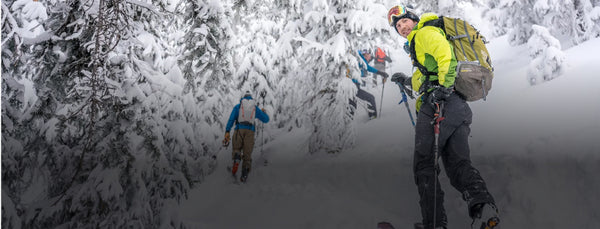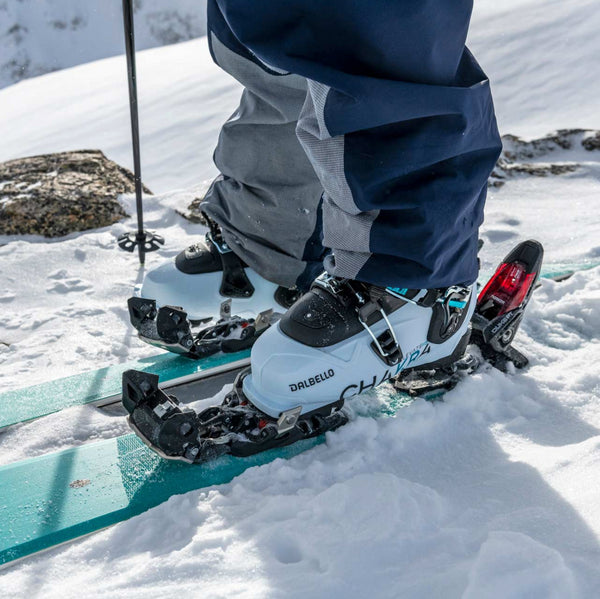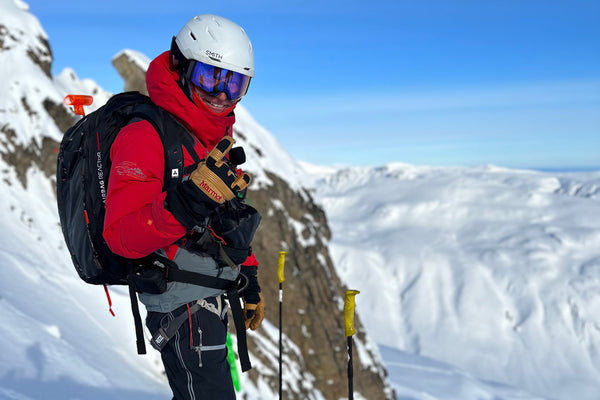
How to Avoid and Treat Altitude Sickness
There’s nothing worse than landing in your favorite mountain town and having to stay in bed because of altitude sickness.
Going quickly from low to high altitude can cause headache, fatigue, and even nausea. Acute mountain sickness affects more than one in four people who travel above 11,600 feet (3,500 meters). While you won’t find many hotels at that elevation, most major ski resorts in the Rocky Mountains, and many in Europe, have lifts and restaurants rising that high—so you may be at risk.
At 8,000 feet—the typical base elevation for a Colorado ski resort—each breath takes in only about 75% of the oxygen you get at sea level. There’s a myth that your level of fitness determines your risk of altitude sickness: It’s really based on genetics. Even if you’re fit, 8,000 feet may bring shortness of breath with exertion (like climbing stairs). Halfway up the mountain, at 9,500 feet, you’re working on about 70% of sea-level oxygen, and at the summit (12,000 feet), the oxygen level is 60%. No wonder we feel breathless with exertion.
SYMPTOMS
It’s not unusual to have trouble sleeping the first night at altitude. But if within six to 12 hours after arrival you experience headache, fatigue, some loss of appetite, nausea, vomiting, lightheadedness, and insomnia, you may be suffering from acute mountain sickness. The problems usually improve in one or two days—if the traveler doesn’t go higher. In fewer than 1% of cases, symptoms can grow worse and turn into high-altitude cerebral edema, a serious medical condition that requires immediate professional care.
Over the course of a couple of days, most people begin to adapt to altitude by creating more red blood cells, which carry oxygen in the blood. Since fewer oxygen molecules are available at altitude, we need more oxygen-carrying capacity. The heart rate also increases to pump more oxygenated blood to the tissues, which is most noticeable the first several days at altitude. You may also notice for a couple of days increased urination, a response to changes in your body’s acid/base balance that helps your acclimatization process.
IMPROVE YOUR CHANCES
How do we prevent some or all of these potential problems? You can start with the travel arrangements themselves, spending a day or two at a medium altitude to acclimatize gradually.
Immediately before your trip, avoid alcohol for 48 hours. An airplane’s cabin altitude, or air pressure, will be 7,000 to 8,000 feet, which means you’ll be exposed to high altitude conditions for a few hours even before arrival. Higher altitudes make you vulnerable to dehydration, so drink lots of water or liquids that replace electrolytes before getting on the plane. Avoid sugary or caffeinated beverages such as soft drinks. Think about hydration this way: You don’t want your blood to thicken. When it does, blood flows more slowly through the capillaries in your brain, leading to headache and sleeplessness.
Being fit may not prevent altitude sickness, but since there is less effective oxygen, a higher fitness level when you arrive will make your trip more enjoyable. Start a stretching and fitness program well before your trip if possible. Most of the exercises to become ski-ready can be done without any equipment from your home, but stability balls or Bosu balls can maximize your efforts. (Check out Wagner’s off-season ski fitness guide here.)
Once you arrive, try to ascend to the top of the mountain slowly (the CDC advises no more than 1,000 feet of elevation gain per day at altitudes above 12,000 feet). Take it easy the first couple of days. Avoid tobacco, alcohol and other depressant drugs including barbiturates, tranquilizers, and sleeping pills. These depressants further decrease the respiratory drive during sleep, resulting in a worsening of the symptoms. Your appetite may decrease at altitude but try and take in an adequate amount of healthy calories, including carbohydrates.
TREATMENTS

Canned oxygen can help, but a longer-term solution is an oxygen concentrator to use at night. Photo: istock
The only cure acute mountain sickness is either acclimatization or descent to a lower altitude, but there are some medications that can help treat it. Pain medications like acetaminophen or ibuprofen can help alleviate headaches. There’s also a medication called Diamox (acetazolamide) designed specifically for altitude sickness: It makes you breathe faster so that you metabolize more oxygen, raises blood oxygen, and increases urination. This is especially helpful at night when respiratory drive is decreased.
Since it takes a while for Diamox to have an effect, start taking it 24 hours before you go to altitude and continue for at least five days once you arrive. The recommendation of the Himalayan Rescue Association Medical Clinic is 125 mg twice a day (the 250 mg dose was not more effective). Possible side effects include tingling the lips and fingertips, blurred of vision, and alteration of taste, all of which subside when the drug is stopped. (People who are allergic to sulfa drugs should not take Diamox.)
You can also rent an oxygen concentrator to use at night or buy canned “recreational” oxygen, which may help considerably. Keep in mind, however, that oxygen will only help while you are breathing it, so the O2 cans from the local store won't do much for long.
We discussed here the most common form of altitude sickness, which is usually mild. More severe forms are high altitude cerebral edema (HACE) and high altitude pulmonary edema (HAPE), which are rare and beyond the scope of this post. Make sure you discuss all recommendations and this information with your healthcare provider.
--
By Alan Safdi, M.D., FACG
Dr. Alan Safdi is past chairman of the Section of Gastroenterology at Deaconess Hospital and served as co-founder and president of the Ohio Gastroenterology and Liver Institute.










